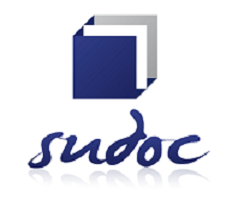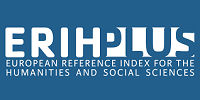Migration aspirations: fallible impact of structural factors and incongruence of aspirations claimed by Ukrainian students at the Czech Republic
DOI:
https://doi.org/10.7203/HYBRIDA.6.26246Keywords:
young people, West Ukraine, migration, aspirations, classical migration approaches Abstract
Abstract
Traditional approaches in migration studies are push and pull factors, neoclassical theory of migration and historical-structural approaches, however these approaches are not human-centered because self-identification, self-realization, aspirations or desires of migrants is not adopted. This article, based on qualitative research in the Czech Republic and Ukraine from 2014 until 2022, is aimed at young Ukrainian participants who throughout eight years migrated in their 15-16-years-old as students at High school in Uni?ov, Czech Republic, while their parents stayed in Ukraine. This article shows that aspirations, instead of objective structural factors, are more decisive for participants and it indicates that migration aspirations are strongly ambiguous and heavily affected by strong inclination to subjective goals which asses the incongruence between participants and their parents in this research.
 Downloads
Downloads
 References
References
Barša, P. & Baršová, A. (2005). Přistěhovalectví a liberální stát. Imigrační a integrační politiky v USA, západní Evropě a Česku. Masaryk University.
Beck, U. (1986). Risk Society. Munich.
Benson, M. & O’Reilly, K. (2009). Migration and the search for a better way of life: a critical exploration of lifestyle migration. The Sociological Review, 57(4), 608-625. https://doi.org/10.1111/j.1467-954X.2009.01864.x
Brzozowski, J. & Pedziwiatr, K. (2015). Student Immigration and Internalization of Polish Universities: The Case of Ukrainians at the Cracow University of Economics. In A. Surdej, & M. Kedzierski (eds.), Economic Challenges for Higher Education in Central and Eastern Europe (pp. 214 – 240). Torun.
Cairns, D. & Smyth, J. (2011). I wouldn’t mind moving actually: Exploring student mobility in Northern Ireland. International Migration, 49(2), 135–16. https://doi.org/10.1111/j.1468-2435.2009.00533.x
Carling, J. (2014). The Role of Aspirations in Migration. Paper presented at Determinants of International Migration. International Migration Institute, University of Oxford. https://jorgencarling.files.wordpress.com/2014/09/carling-2014-the-role-of-aspirations-in-migration-2014-07.pdf
Carling, J. & Talleraas, C. (2016). Root Causes and Drivers of Migration. PRIO Paper, Peace Research Institute Oslo. https://www.prio.org/publications/9229
Carling, J. & Collins, F. (2018). Aspiration, Desire and Drivers of Migration. Journal of Ethnic and Migration Studies, 44(6), 909-926. https://doi.org/10.1080/1369183X.2017.1384134
Carling, J. & Schewel, K. (2018). Revisiting Aspiration and Ability in International Migration. Journal of Ethnic and Migration Studies, 44(6), 945-963. https://doi.org/10.1080/1369183X.2017.1384146
Collins, F. (2018). Desire as a theory for migration studies: temporarility, assemblage and becoming in the narratives of migrantion. Journal of Ethnic and Migration Studies, 44(6), 964-980. https://doi.org/10.1080/1369183X.2017.1384147
Czech Statistical Office. (2023).
De Haas, H. & Rodríguez, F. (2011). Mobility and Human Development: Introduction. Journal of Human Development and Capabilities, 11(2), 177-184. https://doi.org/10.1080/19452821003696798
De Haas, H. (2021). A Theory of Migration: The Aspirations-Capabilities Framework. Comparative Migration Studies, 9(8), 1-35. https://doi.org/10.1186/s40878-020-00210-4
Drbohlav, D. (ed.). (2015). Ukrajinská pracovní migrace v Česku: Migrace – remitence – (rozvoj). Karolinum.
Drbohlav, D. (ed.). (2008). Nelegální ekonomické aktivity migrantů. Česko v evropském kontextu. Karolinum.
Faist, T. & Kivisto, P. (2010). Beyond Border. Sage Publication, Inc.
Faist, T., Fauser, M. & Kivisto, P. (2011). The Migration-Development Nexus. Basingstoke.
Fontana, A., & Frey, J. H. (1998). Interviewing: The Art of Science. In N. K. Denzin, & Y. S. Lincoln (Eds.), Collecting and Interpreting Qualitative Materials (pp. 47-78). Sage Publications, Inc.
Gasińska, M. (2016). Studenci z Ukrainy w Polsce. Uwarunkowania, oczekiwania i opinie w świetle badania ewaluacyjnego w AFiB Vistula. Zeszyty Naukowe Uczelni Vistula, 47(2), 127-147.
Hrynkevych, O. (2017). Cross-border factor of educational migration of Ukrainian youth to Poland: social-economic opportunities and threats. Economic Annals–XXI 163(1-2), 26–30. https://doi.org/10.21003/ea.V163-05
Jirka, L. & Leontiyeva, Y. (2022). Transnacionalismus, integrace a identifikace: Diskuze o proměnlivosti a dynamice sociálních procesů na příkladu studentské migrace z Ukrajiny. Sociologický časopis/Czech Sociological Review 58(1), 29–51. https://doi.org/10.13060/csr.2022.009
Kondakci, Y. (2011). Student mobility reviewed: Attraction and satisfaction of international students in Turkey. Higher Education, 62, 573–592. https://doi.org/10.1007/s10734-011-9406-2
Lendák-Kabók, K., Popov, S. & Lendák, I. (2020). The Educational Migration of Sub-state Ethnic Minorities on the Outskirts of the EU: A Case Study of Serbia. Intersections 6(2), 130–153. http://doi.org./10.17356/ieejsp.v6i2.592
Leontiyeva, Y. & Kopecká, L. (2018). Migrace ukrajinských studentů do České republiky. Perspektivy lidského kapitálu. Asociace pro mezinárodní otázky. https://www.amo.cz/wp-content/uploads/2018/10/AMO_ukrainian-students-in-the-czech-republic_CZ1.pdf
Fresnoza-Flot, A. & Nagasaka, I. (2015). Mobile Childhoods in Filipino Transnational Families: Migrant Children with Similar Roots in Different Routes. Palgrave Macmillan.
Gasper, D. & Thanh-Dam, T. (2010). Movements of the ‘We’: International and Transnational Migration and the Capabilities Approach. Journal of Human Development and Capabilities, 11(2), 339-357. https://doi.org/10.1080/19452821003677319
Ivashchenko, K. (2021). Dynamika Mihracijnych Nastrojiv Naselennja Ukrajiny: Shcho Zminylosja za 30 Rokiv. In V. Vorona & M. Shulha (Eds.), Ukrajinske suspilstvo: Monitorynh Socialnych Zmin 30 Rokiv Nezalezhnosti (pp. 169–184). Kyjiv.
Rodan, L. & Huijsmans, R. (2021). “Our generation…” Aspiration, Desire and Generation as Discourse Among Highly Educated, Portuguese, Post-austerity Migrants in London. The European Journal of Development Research, 33, 147-164. https://doi.org/10.1057/s41287-020-00299-4
Scheilbehofer, E. (2017). Shifting Migration Aspirations in Second Modernity. Journal of Ethnic and Migration Studies, 44(6), 999-1014. https://doi.org/10.1080/1369183X.2017.1384151
Uherek, Z., Valášková, N., Bělohradská, K. & Mušinka, M. (2008). Cizinecké komunity z antropologické perspektivy: vybrané případy imigračních skupin v České republice. Etnologický ústav AV ČR, v.v.i.
Van Hear, N., Bakewell, O. & Long, K. (2018). Push-pull plus: reconsidering the drivers of migration. Journal of Ethnic and Migration Studies 44(6), 927–944. https://doi.org/10.1080/1369183X.2017.1384135
Van Mol, Ch., Snel, E., Hemmerechts, K. & Timmerman, Ch. (2018). Migration aspirations and migration cultures: A Case Study of Ukrainian migration towards the European Union. Population, Space and Place, 24(5), 1–11. https://doi.org/10.1002/psp.2131
Van Mol, Ch. & Timmerman, Ch. (2014). Should I Stay or Should I Go? An Analysis of the Determinants of Intra-European Student Mobility. Population, Space and Place, 20(5), 465–479. https://doi.org/10.1002/psp.1833
Published
How to Cite
-
Abstract302
-
HTML177
-
PDF199
Issue
Section
License
![]()
All the documents in the OJS platform are open access and property of their respective authors.
Authors publishing in the journal agree to the following terms:
- Authors keep the rights and guarantee HYBRIDA the right to be the first publication of the document, licensed under a Creative Commons license Attribution-NonCommercial-ShareAlike 4.0 International (CC BY-NC-SA 4.0) that allows others to share the work with an acknowledgement of authorship and publication in the journal.
- Authors are allowed and encouraged to spread their work (once published) through electronic means using personal or institutional websites (institutional open archives, personal websites or professional and academic networks profiles) once the text has been published.
















